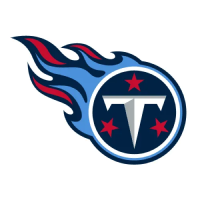Last year, the Dallas Cowboys finished the season 6-10 after losing seven of their first nine games. This year, they’re already two wins away from matching their 2020 total in just five weeks. They’re the clear favorites in the NFC East and in a position to even run away with the division title. What changed?
There are a few big things: Mike McCarthy is in his second year as Dallas head coach, so he’s had time to settle in, and the Cowboys hired former Falcons head coach Dan Quinn as their new defensive coordinator after having one of the worst defensive showings in franchise history in 2020. The biggest change though—what has most significantly turned the Cowboys into legitimate playoff contenders—has been the return of quarterback Dak Prescott.
If you go back and look at the five games Prescott was able to play in 2020, you’ll find that he was off to an incredible start with chances of being an MVP candidate by season’s end. The guy was averaging 371 passing yards per game with nine touchdowns, a 68% completion rate, and a cumulative passer rating of 99.6. Last year’s MVP winner, Aaron Rodgers, had more touchdowns through five games, but he was averaging almost 100 fewer yards per game along with a lower completion rate.
Meanwhile, Prescott’s replacement, Andy Dalton, started nine games and barely finished with 200 more yards than the former, along with a completion rate under 65% and a passer rating of 86.7. To call Dalton a significant downgrade might still be understating the Cowboys’ situation in the back half of the season. With Prescott starting under center, Dallas scored fewer than 30 points only once, and that was when they scored 17 on the Los Angeles Rams’ league-best scoring defense. In Dalton’s nine starts, they reached 30-plus points in fewer than half of them, just four times. In the two weeks Dalton was inactive and Ben DiNucci and Garrett Gilbert got starts, the Cowboys didn’t even reach 20 points.
Contrast all of that with what we’ve seen from Dallas so far this season. Their defense is better, sure, but they’re also averaging 34 points per game, second-best in the NFL. After the Cowboys heavily leaned on him and his 400-yard performance against a Tampa Bay team much better at stopping the run than the pass, there was some concern that the toll on Prescott’s arm would be a problem if he was asked to throw almost 60 times per game. Instead, Ezekiel Elliott has shown us that he’s still got it, and offensive coordinator Kellen Moore has utilized a more balanced offensive look since Week 1. It’s a move that has allowed Prescott to really thrive, as he’s on an active streak of three straight games with at least three passing touchdowns. Prescott, while not on pace for the same yardage mark that he might have achieved last year, is throwing more touchdowns with fewer interceptions and incomplete passes.
Taking a big picture look at his stats, he’s off to the best five-game start of his career, and the Cowboys are reaping the benefits of his contract extension early. His ability to read defenses pre-snap and during play has made him a fantastic commander of Moore’s well-designed offense. The way he’s been playing has completely turned Dallas around from the offensive struggles they faced last year—they have yet to play a division rival and not blow them out—and it’s no question that he deserves consideration in this year’s MVP race.
If his offensive coordinator leaves for a head coaching job, which is a possibility that grows stronger with each impressive offensive showing, Prescott may see a dip in his production in the years to come. But this Dallas offense looks completely different, reinvigorated even, with him under center. Provided he stays healthy, the Cowboys will keep marching toward that NFC East division title this season.
Filed In
Related Articles
NFL Draft
Arik Gilbert Doesn’t Need Big Workload To Be A Top NFL Draft Pick
- Aug 22, 2022
NFL Draft
2023 NFL Mock Draft: Marino 1.0
- Aug 22, 2022
Written By


































